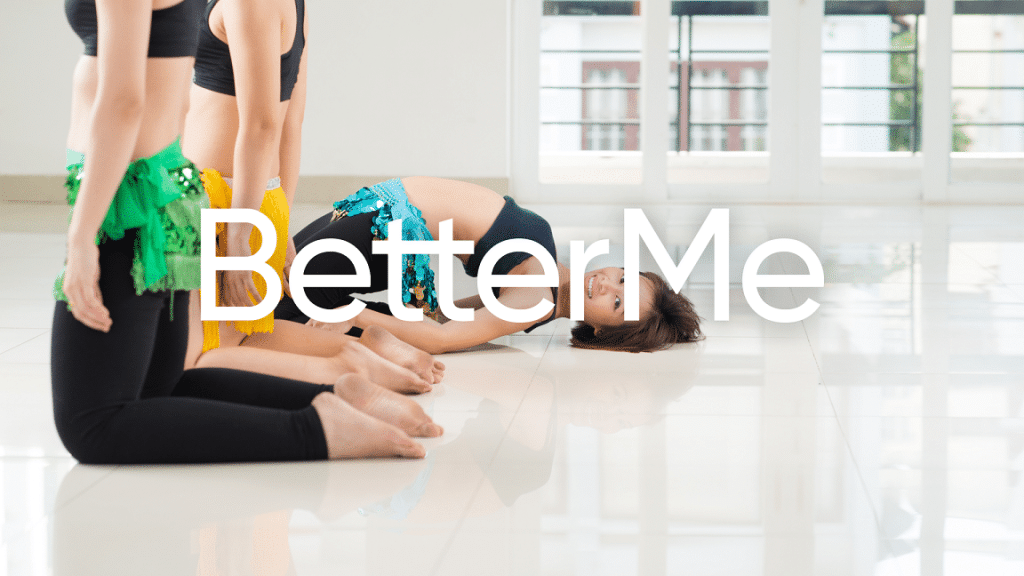Cellulite is the bane of many women’s lives. It’s those pesky dimples on your thighs and butt that just won’t seem to go away, no matter how much you diet or exercise.
And even though cellulite is perfectly normal — about 80 to 90 percent of women have it — it’s still something we’d all like to get rid of. So, does cellulite go away?
Unfortunately, the answer is no. At least not in the way most body fat does. When you lose weight, your body fat cells shrink. But with cellulite, the structure of the fat cells themselves doesn’t change. So, even if you lose a significant amount of weight, your cellulite will still be there (2).
However, good news is that, even though you can’t get rid of cellulite completely, there are things you can do to minimize its appearance.
Here’s everything you need to know about cellulite and why you shouldn’t worry too much about it.
What Is Cellulite?
Cellulite is a type of fat that’s found just under the skin. It has a unique structure, with compartments that are smaller than traditional fat cells. This makes it harder for the body to break down and get rid of.
Cellulite is most common in the thighs and butt, but it can also be found on the stomach, arms, and other areas of the body.
What Causes Cellulite?
There are a few things that contribute to the development of cellulite:
Hormonal Changes
Your body has many hormones that serve different functions. One of these hormones is estrogen, which helps to keep your skin elastic and strong.
As you get older, your body produces less estrogen. This can cause the connective tissue in your skin to weaken, which allows fat cells to push through more easily. This is one of the reasons why cellulite is more common in older women (5).
Estrogen is not the only culprit, though. Other hormones, such as insulin and cortisol, can also play a role in the development of cellulite.
Read More: Cellulite On Arms: Causes, Treatment, And Ways To Avoid It
Genetics
The idea that you can inherit cellulite seems unfair, but unfortunately, it’s true. If your mother or grandmother had cellulite, you’re more likely to have it too.
This is because cellulite is partly due to genetics and how your body stores fat. So, if cellulite runs in your family, there’s not much you can do to prevent it (1).
Lifestyle Factors
Certain lifestyle choices can also contribute to the development of cellulite. For example, eating a high-fat diet or not getting enough exercise can lead to an increase in fat cells.
Smoking is another factor that can contribute to cellulite too. This is because smoking damages your skin and makes it less elastic (2).
Aging
As we grow older, our skin becomes thinner and less elastic. This makes it more susceptible to the appearance of cellulite (4).
Pregnancy
During pregnancy, many women experience an increase in fat cells. This can cause the connective tissue in the skin to weaken, leading to the development of cellulite (6).
Why Don’t Men Get Cellulite?
You may have noticed that cellulite is much more common in women than in men, and there are a few reasons for this.
For one, men generally have less body fat than women. They also have more muscle mass, which burns more calories and helps keep fat cells in check.
Men also have a different distribution of fat than women. In women, fat is more likely to collect in the thighs and butt. In men, it’s more likely to accumulate around the stomach.
Finally, the connective tissue in men’s skin is thicker and more elastic than in women. This makes it less likely for cellulite to form (3).
Does Having Cellulite Mean I’m Overweight?
No, not necessarily. Cellulite can develop in people of all shapes and sizes.
In fact, even thin people can have cellulite. This is because cellulite is not just about how much fat you have — it’s also about the structure of your fat cells and the connective tissue in your skin.
So, even if you’re at a healthy weight, you may still have some cellulite (2).
Should I Worry About Cellulite?
For the most part, cellulite is harmless and painless. It’s also very common, affecting up to 90% of women (2).
With that being said, cellulite is also known to be a source of insecurity for many people. If you’re unhappy with the way your body looks, there are a few things you can do to improve the appearance of cellulite.
If you wish to cinch your waist, tone up your bat wings, blast away the muffin top – our fitness app was created to cater to all your needs! BetterMe won’t give excess weight a chance!
The Right Skin Care Can Help
Because cellulite shows more when your skin isn’t in good condition, having a moisturizing and firming skincare routine can greatly improve the appearance of your skin — and, by extension, your cellulite.
Here are a few things you ca do:
- Exfoliate regularly: To slough off dead skin cells and help your skin better absorb moisturizers.
- Choose the right products: Look for moisturizers that contain caffeine, retinol, or collagen. These ingredients can help strengthen skin, improve blood flow, and reduce the appearance of cellulite.
- Wearing sunscreen: It is also important to wear sunscreen, as it can help prevent damage to your skin that could make cellulite more visible.
Get Regular Exercise
Exercise offers solutions for most health and aesthetic concerns, including cellulite.
In addition to helping you lose weight and tone your muscles, exercise can also improve circulation and help break down the fat cells.
A combination of cardio and strength training is the best way to reduce cellulite. Cardio exercises like running, biking, or swimming help burn calories and promote weight loss. Strength training, on the other hand, helps build muscle and improve circulation (7).
Eat A Healthy Diet
Eating a healthy diet is important for many reasons, including weight loss, improved skin health, and reduced inflammation.
When it comes to cellulite, a healthy diet can help improve circulation and reduce the amount of fat in your body.
To help reduce cellulite, focus on eating plenty of lean protein, healthy fats, and fresh fruits and vegetables. Avoid processed foods, sugary drinks, and excessive amounts of salt (7).
Cellulite Treatments May Help
There are a number of treatments that claim to reduce cellulite. However, most of these treatments are only temporary solutions (7).
Some common cellulite treatments include:
- Lymphatic drainage massage: This is a type of massage that helps promote circulation and reduce fluid retention.
- Laser treatment: This treatment uses lasers to break down fat cells and stimulate collagen production.
- Radiofrequency: This treatment uses heat to tighten skin and improve circulation.
These treatments may offer temporary results, but they may have long-term results as long as you don’t stop the treatments. If you do stop, the cellulite will slowly come back as well.
Read More: Best Cellulite Workout: Use This To Tone And Improve The Appearance Of Your Skin
Should I Get Liposuction For Cellulite?
Liposuction is a surgical procedure that removes fat from the body. It is performed by making small incisions in the skin and suctioning out the fat.
Liposuction can be effective in reducing cellulite in some people. However, it is a more invasive procedure and comes with risks such as infection, bruising, and swelling.
It’s also important to note that after the procedure, fat doesn’t naturally spread evenly throughout the body. This means that you may end up with more cellulite in other areas of your body.
BetterMe is your fast-track ticket to a long-lasting weight loss! Tailor your fitness journey and maximize your results with just a couple of swipes!
The Bottom Line
Cellulite is a common, harmless condition that affects mostly women. Although there is no cure for cellulite, there are things you can do to improve the appearance of your skin and reduce the amount of fat in your body.
Exercising, eating a healthy diet, and getting regular massages can all help to reduce cellulite. There are also treatments available that can temporarily improve their appearance. However, these treatments are usually expensive and their results are not long-lasting.
If you’re concerned about the appearance of cellulite, talk to your doctor or a dermatologist. They can help you find the best way to improve the appearance of your skin.
DISCLAIMER:
This article is intended for general informational purposes only and does not serve to address individual circumstances. It is not a substitute for professional advice or help and should not be relied on for making any kind of decision-making. Any action taken as a direct or indirect result of the information in this article is entirely at your own risk and is your sole responsibility.
BetterMe, its content staff, and its medical advisors accept no responsibility for inaccuracies, errors, misstatements, inconsistencies, or omissions and specifically disclaim any liability, loss or risk, personal, professional or otherwise, which may be incurred as a consequence, directly or indirectly, of the use and/or application of any content.
You should always seek the advice of your physician or other qualified health provider with any questions you may have regarding a medical condition or your specific situation. Never disregard professional medical advice or delay seeking it because of BetterMe content. If you suspect or think you may have a medical emergency, call your doctor.
SOURCES:
- Cellulite’s aetiology: a review (2013, nih.gov)
- Cellulite: an evidence-based review (2015, nih.gov)
- Cellulite and Gender (2022, healthcentre.org.uk)
- Cellulite in menopause ( 2015, nih.gov)
- Estrogens and aging skin (2013, nih.gov)
- Physiologic changes of pregnancy: A review of the literature (2017, nih.gov)
- Treatment for cellulite (2019, nih.gov)

















